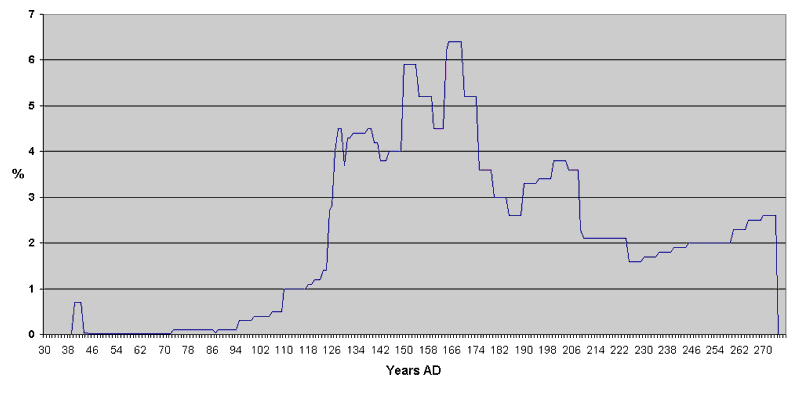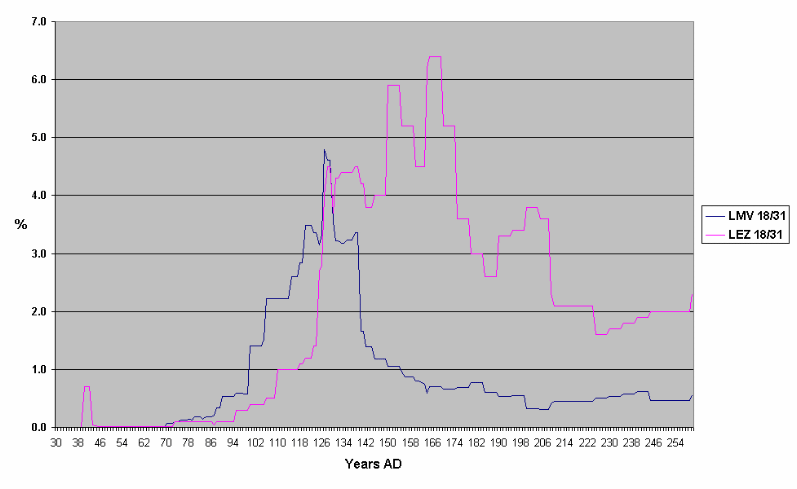
Chart 7:
The Frequency of Samian Forms over Time: the 'Currency' of Dishes of form Drag. 18/31 from Lezoux in Britain as a Percentage within Samian Assemblages by Calendar Year (Source: database).
In Chart 7 the relative frequency of this form though time is plotted. These unsmoothed data show a pattern of rise and fall in frequency of this very common 2nd century type. The graph fits fairly well with the traditional dating of this form as beginning with the import of Lezoux vessels in bulk after c. AD 120, and ending c. AD 150. The 'tail' of this familiar form is comparatively thick.

Chart 8:
The Frequency of Samian Forms over Time: the 'Currency' of the Dishes of Drag. 18/31 form from Les Martres and Lezoux as a Percentage within Samian Assemblages by Calendar Year (Source: database).
Finally, Chart 8 compares these data for Lezoux 18/31s with that for the typologically earlier Les Martres versions. The sequence trend is clear for these data.
These examples demonstrate how the database (e.g. via Table 81) can 'test' conventional dating and place the dating of individual forms upon a potentially firmer footing. The 'date' of some samian types has, moreover, never previously been well defined, and so the database offers the opportunity to clarify chronological trends, as with the Drag. 38 plain bowl and the decorated beaker, Déch. 67. The size of the sample is fairly large so the results now forthcoming from this type of analysis should be valid and fairly reliable. Further, with some vessel form types, as with the Drag. 29, the opportunity for a more subtle approach presents itself, employing the database, specifically to look at their life-span at different classes of site to see whether there is variation in their currency at that level, reflecting different site type and different types of consumers.
The database will not invariably produce clear results; attention to source data is recommended as there are possibilities of data skewing, for instance through the presence of a particularly large sample from one site (e.g. Castleford fort or Fishbourne) or periods when the aggregate sample is thin (e.g. the period prior to c. AD 45 and the 3rd century).
In the case studies examined above and previously (Willis 1998a), it is apparent that the incidence of some types over time can be seen to agree closely with the traditional dating of the type. In other cases, though, there are discrepancies. These are of interest since they raise questions about conventional dating that need addressing. They provide a new perspective on the chronology of some samian types and carry the implication that some dating of samian types may be in need of qualification or redefinition, particularly in view of the apparent longevity of some types through curation.
© Internet Archaeology
URL: http://intarch.ac.uk/journal/issue17/1/5.4.2.5_6.html
Last updated: Mon Mar 7 2005